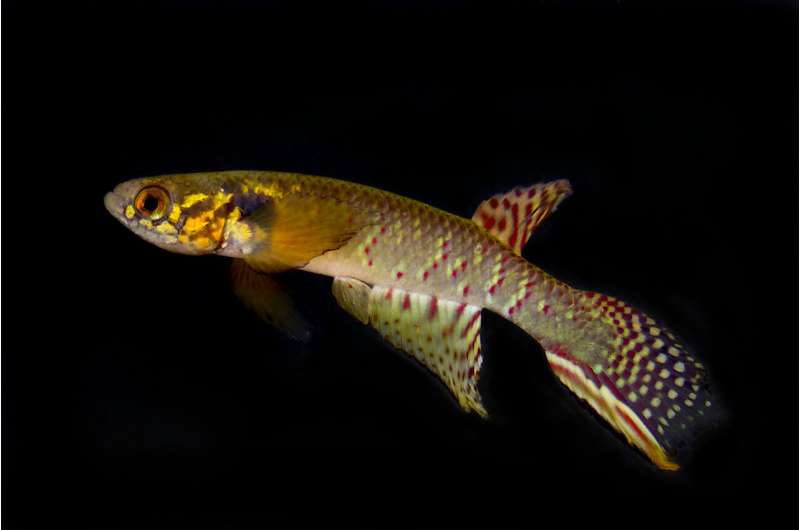Researchers have rediscovered the Moema claudiae, a species of seasonal killifish in Bolivia, which was previously thought to be possibly extinct. This significant finding not only rekindles hope for the conservation of this unique fish but also highlights the urgent need to protect the region’s diverse wetland habitats. The species was last documented over 20 years ago, and its original habitat has since been transformed into agricultural land.
Despite extensive surveys in recent years yielding no sightings, researchers Heinz Arno Drawert and Thomas Otto Litz located a surviving population in a small, temporary pond surrounded by farms during a recent expedition. This discovery marks the first record of the species in more than two decades, allowing scientists to capture the first-ever live photographs and observe aspects of its behavior and natural history. The findings were published in the journal Nature Conservation.
Thomas Litz, one of the co-authors, expressed his excitement about the rediscovery: “For me, it is something special to have rediscovered Moema claudiae. This has shown that we now have the opportunity to preserve this species in the wild.” He also acknowledged the dedication of Professor Wilson Costa, who named the species after his wife, Claudia, and emphasized the importance of their longstanding collaboration.
The habitat where Moema claudiae was found is noteworthy not just for this species but for its overall biodiversity. The area hosts six other species of seasonal killifish, making it the most genetically diverse assemblage of these fish documented worldwide. The unique ecology, where the Amazon forest meets the Llanos de Moxos savannas, contributes to this diversity. However, rapid deforestation and agricultural expansion pose significant threats to these critical habitats.
Scientists are now advocating for urgent protective measures for the area, as it represents the only known site with a wild population of Moema claudiae. Over the last 25 years, nearly 10 million hectares of forest have been lost in Bolivia, endangering vital wetland habitats. Deforestation rates have accelerated notably in recent years, raising alarms about the future of many unique species and ecosystems.
Heinz Arno Drawert emphasized the necessity for immediate action: “Without rapid and effective action to curb the irrational expansion of the agricultural frontier in Bolivia’s lowlands, we risk losing some of the world’s most important terrestrial and aquatic ecosystems, and with them the irreplaceable goods and services they provide.” He pointed out that true social and economic well-being can only be achieved by maintaining the functionality of ecosystems that support human life.
This rediscovery of Moema claudiae not only highlights the importance of conservation efforts but also sheds light on the fragile balance between human activity and the natural world. The findings underscore the need for collaborative approaches to protect the biodiversity that remains in Bolivia and elsewhere.
For further information, refer to the study by Heinz Arno Drawert et al., titled “Rediscovery of a thought to be extinct beauty: a second chance for conservation,” published in Nature Conservation in 2025.




































































